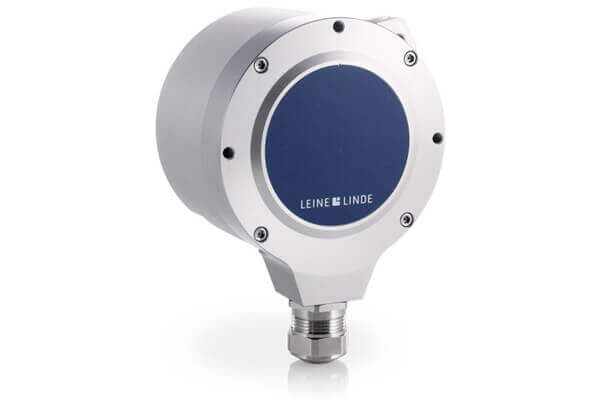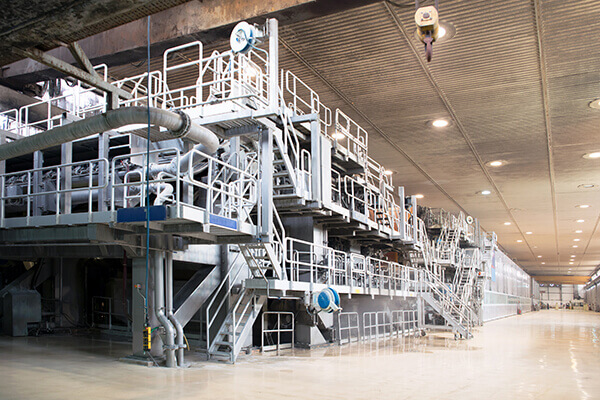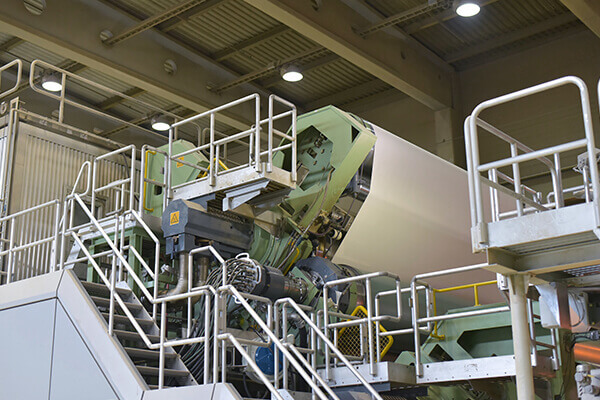Process control and safety with the FSI 800 series
The drive system is the heart of a paper machine. At Smurfit Kappa Piteå, Leine&Linde’s encoders have provided stable and dependable speed feedback to drive systems for more than 30 years. During the most recent update of the drive system for Paper Machine 1, Leine&Linde’s safety-certified encoder FSI 862 was installed.
SMURFIT KAPPA Piteå is Europe’s largest producer of kraftliner with a production capacity of about 700,000 tons for the brown or white surfacing material that is used on corrugated cardboard of the best qualities in packaging products. This is where we meet system engineer Björn Lidström, responsible for the mill’s drive systems. The production plant in Piteå has been in operation since the early 1960s and Björn Lidström has worked at the company since 1987.
“A paper mill is characterized by both a long-term approach and speed,” he says. “How you can get the most out of the machines, maintain them so that they last, prevent problems, and at the same time, make sure that they can produce as much as possible without downtime.” This means that drive system responsibility involves both awareness and teamwork. Because it’s people who work with the machines – such as the process operators, mechanics and system engineers. The mill is in operation around the clock with a six-shift schedule.
Functional safety installed
The production unit called Paper Machine 1 consists of a wet section, a press section and a drying section, as well as quality control and reeling. The various sections extend for several meters in the building and the kraftliner material is transported in a complex system over several floors, where wire cloths help the water to run off before the paper is pressed and dried. Because large portions of the system must be designed to provide access to the machinery even while it is operation, the machine directive for functional safety must be observed. This is where Leine&Linde’s FSI 862 encoder is used.
“The first AC motor in Paper Machine 1 had recently been installed when I started here, and the motor was already using encoders from Leine&Linde,” says Björn Lidström. “The motor is from Strömberg, which is now owned by ABB, and is still in use as a part of the drying line. It’s great to see how it can still do the job, now with functionally safe speed feedback in accordance with the machine directive.”
The drive system is displayed on the control room’s computer screens. Each green dot is an encoder that is installed on a motor, and motor speed can be monitored in real-time. The encoder provides speed feedback to the frequency converter, but also has a responsibility in the safety system. Thanks to the FSI 800 series’ signals managing long cable lengths, it’s no problem to run the cables the whole way to the control cabinets, which are gathered in a separate room where they cannot be affected by the paper machine’s often high temperatures and humidity. ABB’s frequency converters and their safety modules are installed in the cabinets, easily recognizable by their yellow color.
“Moreover, ABB helped us to run all the encoders to a separate measurement cabinet,” says Björn Lidström. “We’ve installed signal splitters so that we can use the encoder signals for several different things even though we only have one encoder per motor. We have measurement terminals with measurement outputs so that we can read off and compare the frequencies as necessary. In this way, we can see if we need to reconfigure load distribution between different operations in the same group to create increased balance in the flow.”He also feels that collaboration with ABB has gone well, and the same goes for Leine&Linde.

“If we have questions, we get answers, and we usually get a good response when we can motivate why we want things to be in a certain way. A stable and safe drive system is the heart of a paper machine.”
Downtime and damage minimized
When it comes to encoders, it is naturally important that they deliver what they promise. While delivery times are important, of course, so are dependability and tolerances, such as how much motor vibration they can withstand and still deliver their signal. “It’s sometimes happened that someone needs access to the upper parts of a motor and has climbed up on the encoder. This isn’t a very good idea since the shafts can bend. But in my experience, they can still be run until a scheduled stop. They’re that durable,” Björn Lidström says with a smile.
Additional Resources and Case Studies


